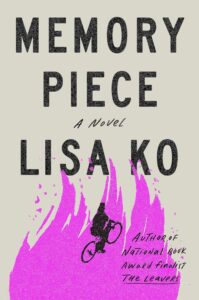
[ad_1]
This first appeared in Lit Hub’s Craft of Writing newsletter—sign up here.
I never start a novel knowing where I’m going. I don’t write linearly, and not in clear, numbered drafts, from a beginning to an end. I gather and cut and gather some more. I call it the flea market process of novel writing. Like rifling through a thrift store bin of clothing and putting together an outfit from disparate pieces, the process involves collecting things for their potential and possibility, then trying them on for size. Storing them away, a rat’s nest of hoarded scraps and materials, to use if not now, then maybe later.
Even the writing that doesn’t make a book’s final version can be placed into a folder called COMPOST. In the past, I’ve wondered if I’m doing it wrong, if there’s a more efficient way of novel making that more closely resembles the freshman comp stages of outline, draft, revision, done! But I’ve since come to embrace the circuitousness.
When I was growing up, my parents and I ran a stand at craft shows and flea markets, where scavenged objects were seen as valuable. The objects we sold were made from junk that had been destined for the trash, like a box of wood, for breaking boards, that my father volunteered to dispose of from the tae-kwon-do studio where he taught night classes. Instead, he took it home. How can these ingredients be useful? we asked. What could we create out of this? So much, it turned out.
We cut the wood into the shapes of tea kettles and teddy bears, “country crafts” which I painted in bright colors—I might have been in middle school, but my hand was steady enough. Or the bags of fabric remnants tossed aside at a family friend’s textile factory, too small for adult-sized clothing, but the perfect size for doll clothing, which my mother made on her Singer machine. I snipped the loose threads; my father ironed the hems.
Flea markets are full of people selling found junk that’s been fixed into something else. There was a woman who glued googly eyes onto rocks, a man who spray-painted nails and bent them into letters to spell out your name. Vintage electronics, old postcards, coin collections: everything had the potential to find a home. Each time my parents and I sold one of our handmade items, I felt like we had gotten away with something.
The final version of the book is a trick of clean minimalism, cloaking its maximalist roots.
I imagine a novel-in-progress as a tumbleweed, picking up an author’s interconnected interests and ideas over however many years it takes to sculpt them into a story and solve the puzzle of what questions the book is asking. My novel Memory Piece began with collecting inspirations about various obsessions—early internet culture, performance art, malls, surveillance capitalism—which then grew into hundreds of Scrivener files with characters and dialogue and scenes. In my non-writing life, I loathe clutter, my preferred mode minimalist everything, but my computer and notebooks, glutted with disorganized files, reveal the truth.
My apartment may appear relatively sparse and tidy, but behind the closet doors are boxes crammed with paper. Whenever I get overwhelmed, I simply start a new Scrivener project and stick the old one into a folder so I don’t have to look at it anymore. There are no drafts, only a mess that expands until it’s time to wrangle it into shape. Years pass like this. The final version of the book is a trick of clean minimalism, cloaking its maximalist roots.
Knowing when it’s time to shape, and what shape to aim for, is the result of many attempts and failures. Before our country crafts, my parents and I tried to use the tae-kwon-do wood for other things, failed projects like birdhouses with sides that didn’t fully line up and a very small, very useless cutting board. I wrote a version of Memory Piece where one of the characters dies young, another version with four different narrators. I spent a summer writing 20,000 words’ worth of scenes that went directly into COMPOST. It’s through the process of trying and finding out what doesn’t work that you eventually discover what does.
Two years into writing Memory Piece, I realized the novel had three protagonists, not two. But in order for things to become clearer, you have to first allow yourself to be unclear. I refer to this as “soft gaze,” a phrase I have taped on the wall in front of my desk. Blur your eyes a little, don’t focus on getting it right. Let it unfold, don’t overthink. Do this for a few years and you’ll be surprised at how far you’ve gotten, how you can write a novel without believing you’re writing a novel.
Doing something by pretending I’m not really doing it is a mind trick that’s proven to be useful strategy for enduring activities I feel ambivalence toward, whether it’s biking up a steep hill or going to the dentist or writing the word-count equivalent of three novels and deleting two-thirds of it and spending an additional two years compulsively editing the remaining third into something readable.
In these moments—in the months and years of these many moments—of apprehension, it helps to embrace the flea market ethos. Don’t be too precious about things. And also: everything has the potential to be precious.
Look at what you’ve been circling around, what you’ve already collected. Here are the items, the ingredients you have to work with. What can you create out of this? So much.
________________________________________

Memory Piece by Lisa Ko is available now via Riverhead Books.
[ad_2]
Source link